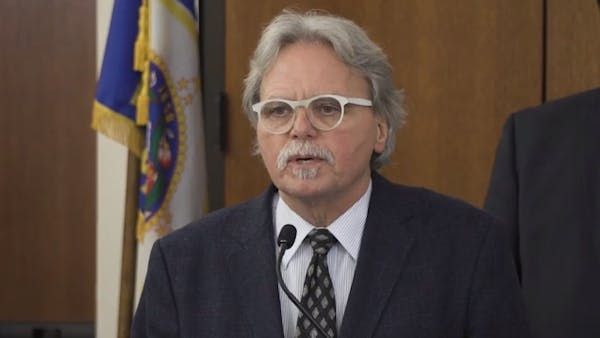• April 9: As the prosecution's first witness, Justine Ruszczyk Damond's fiancé Don Damond took the stand to recount the night Justine stopped answering her phone after telling him that the police had arrived in response to her 911 call about a possible sexual assault in the alley behind her home. Eventually a Minneapolis police officer answered the phone to tell him that Justine had been fatally shot.
• April 10: Assistant Hennepin County Medical Examiner Lorren Jackson testified that the bullet fired by officer Mohamed Noor pierced one of Damond's major arteries, and would have been difficult to survive even with immediate medical intervention.
•April 11: The first body camera videos played for the jury revealed that officers tasked with watching Noor and his partner Matthew Harrity in the immediate aftermath of the shooting offered them unsolicited advice to keep quiet, contacted union officials on their behalf and turned a squad camera off before Noor was seated inside the vehicle. Prosecutors also called into question the actions of several officers who turned their body cameras on and off at the scene, crafting a picture of police secrecy in the shooting's aftermath.
• April 12: Lt. Daniel May, who was then the supervisor in charge of the Fifth Precinct midwatch shift where Noor worked, told the court that ambushes on police were a "frequent" topic of conversation.
• April 17: A teenage bicyclist who witnessed the aftermath of the shooting testified that he reflexively recorded the incident on his cellphone, despite a hazy recollection of what happened that night. It was the first time jurors saw Noor and Harrity's actions immediately after the shooting.
• April 18: Harrity took the witness stand, recounting over more than five hours of testimony how he heard a loud bang, then feared for his life when a silhouette suddenly appeared outside their squad vehicle, but he didn't immediately know whether deadly force was needed. Harrity's body-camera video was played in court, showing Damond's final moments as the officers tried to save her.
• April 22: A Minnesota Bureau of Criminal Apprehension fingerprint specialist testified that none of the 51 fingerprints lifted from the squad belonged to Damond, casting into doubt that she slapped or otherwise touched the squad before she was shot.
• April 23: The prosecution aggressively questioned the BCA about its inquiry into Damond's killing and role in perpetuating the theory that she slapped Noor's squad moments before he fatally shot her. The prosecutors' case on authorities' shortcomings had previously been directed at Minneapolis police.
• April 24: Two prosecution use-of force experts testified that Noor's actions were unreasonable when he fired that night, but a defense use-of-force expert said Noor was "objectively reasonable" when he fired.
• April 25: Noor took the witness stand in his own defense, breaking a two-year public silence after the shooting. He testified that he fatally shot Damond because he feared she was a threat to his and his partner's lives. "It felt like my whole world came crashing down," Noor said, recounting the moment when he realized that he had shot an unarmed civilian. Under intense prosecution questioning, he admitted that he never saw anything in Damond's hands. "I had to make a split-second decision," he said.
• April 26: Defense attorneys called two surprise witnesses who testified that they heard noises that night, potentially lending credence to Noor and Harrity's testimony that they were startled by a loud sound on their squad car that made them fear for their lives.
"I remember hearing, 'Boom, boom, boom,' " testified Michelle LeBlanc, whose backyard overlooks where Damond was killed.
• April 29: After the prosecution and defense delivered heated closing arguments, jurors began deliberating Noor's fate and debating two versions of the killing: An officer who acted recklessly when he fired at a woman who had called 911, and one who used his training to stop a possible threat to himself and his partner.

Want to share info with the Star Tribune? How to do it securely

'Safe recovery sites' would offer syringes, naloxone and more to people using drugs. The plan could be in peril.
New Minnesota GOP leaders seek peace with party's anti-establishment wing

Who is Republican Lisa Demuth, Minnesota's first House speaker of color?



